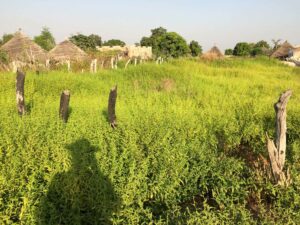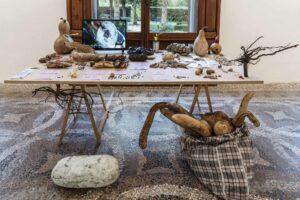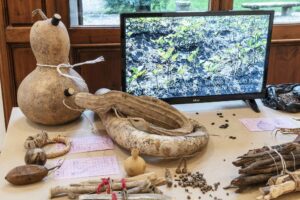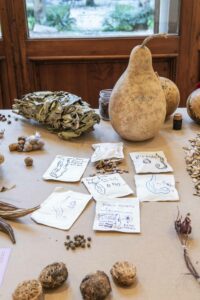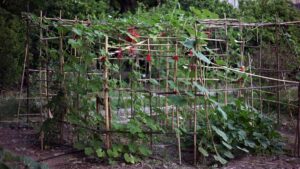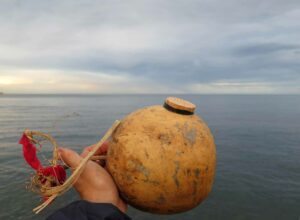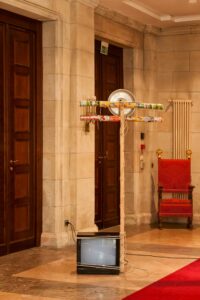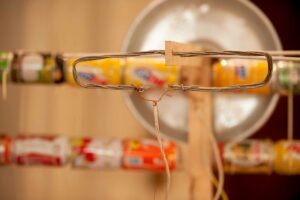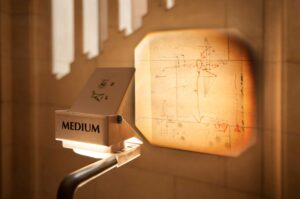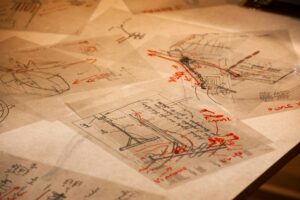Leone Contini, born in Florence in 1976, studied philosophy and cultural anthropology at the University of Siena. His research focuses on intercultural friction, conflict and power relations, frictions, migration and diaspora and uses the tools of anthropology to short-circuit the spheres of commonness through lecture-performances, collective interventions in public spaces, textual and visual narratives, blogs and self-publishing. He has held exhibitions and displayed work at the Centre Pompidou, Paris; SAVVY, Berlin; PAV, Turin; IAC, Lyon; Manifesta 12, Palermo; Fondazione Sandretto, Turin; Museo delle Civiltà, Rome; Mudec, Milan; Quadriennale, Rome; Cittadellarte, Biella; Mart, Rovereto; Delfina Foundation, London; Kunstraum, Munich and Kunstverein Milan; and Khoj, New Delhi. In 2017 he won the second edition of the Italian Council award.
The White Man Tomato and other Tales
Installation, research
2018
“Sinthian. While walking with Abib I see a cucurbit which I’m familiar with: I know it as ‘patola’, a snake-shaped gourd popular among Bengalese in Italy, who are successfully growing it all over the peninsula. I also cultivate it, and reproduce its seeds. But now Abib says that it’s not a cucurbit: it’s a tomato. Its full name is “tomate tubaco”, where tubaco stands for white man. I’m intrigued by the incongruences around this vegetable. While in South Asia patola is eaten young and green, here they wait for the white-man-tomato to turn orange-red: at this stage of ripeness the pulp is toxic but the seeds, now fully mature and fertile, are wrapped within a red gel, sweet and nutrient, which was used as a substitute for tomatoes. It’s somehow associated with poverty. People can now afford canned tomatoes from Tambacounda and nobody eats this cucurbit anymore, which in the meantime turned wild again, twisting its tendrils with the local calabasses. Maybe my misplaced appearance in the village resembles the bright-red of white-man-tomato.
Other tales:
In her free time Fatima roves around the parks of Milano, collecting tree bark for medical uses. She knows the flora of the city better then a botanist. Ibra’s garden flourishes on the shores of Piave river: every summer Senegalese seeds develop into ripe fruits, nourished by the fertile soil of the Venetian plain, to produce food for the family (plus a little business) and seeds for the next year. A Senegalese-Venetian landscape was invented, while Chinese farmers grow unknown vegetables in the Florentine plain and Bengalese people around Rome and Palermo. The outcome of their work often ends in the same (very local) distribution chain: on the shelves of the mini-markets cultivars and denominations are constantly re-mixed. Mario’s garden borders with Yu Fen’s family farm: they observe each-other with curiosity, but at a certain distance. Yu Fen had to reinvent his rural knowledge out of the tabula rasa of migration, but the climate mutations turned Mario too into a foreigner, although he never moved from his village. Last year Mario gave me a dried “fish pumpkin” a calabash used by fisherman to keep their prey alive, “back then when the river was feeding the families”. According to him the gourd is originally from Morocco. He reproduced its seeds every year since 1954, now it is my turn to keep the tradition alive, he said. Some of them are now sprouting in Sinthian, some others in Palermo. I’m familiar with this variety since my grandmother, originally from Sicily, grew a very similar vegetable, named cucuzza, in a little garden outside Florence.” (L.C.)
The White Man Tomato and other Tales was created in the framework of the artistic research and exchange project Seeds For Future Memories, a cooperation between the artist residencies Thread in Sinthian, Senegal and Villa Romana in Florence, Italy, in 2018.
www.seedsforfuturememories.com
Foreign Farmers
Installation
2018
The result of ten years of collecting seeds and stories has taken shape as an experimental garden at Manifesta 12, where migrating varieties cohabit and are acclimated, set in the Botanical Garden in Palermo. Inspired by the fundamentally hybrid genealogy of Sicilian plants and vegetables, the artist has built a bower in the former colonial section of the Botanical Garden, which was once dedicated to acclimation experiments run on species brought from the colonies. The construction of a hybrid bower upends the historic significance of this space: acclimation is no longer imposed as part of a power-based relationship, but is a natural process. Here, the cucuzza (a snakelike summer squash essential to Sicilian home cooking) grows alongside its Bengali, Sri Lankan, Philippine, Turkish, and Chinese counterparts. A sort of cabinet of curiosities has been set up in the Gymnasium, the result of the fieldwork Contini has done on foreign farming practices over recent years.
Il sole sorge ad Occidente (The sun rises in the West)
Installation, video 9’22”
2013
“The idea for the project came to me when I found an old map of Albania dating to the period when the country was under Italian occupation: it probably belonged to my grandfather, who was stationed in the Balkans during WWII. The map marked cities and places with lines and dots, indicating an invasion, an attempt to control and dominate. Today each dot is a void, echoing both a personal and collective amnesia: my family lost all the information about the map, as Italy denies (and ignores) its colonial and imperialist past, especially in the Balkans. The project is an attempt to reactivate those war-paths from a different perspective: I embarked upon a meticulous web of journeys, as far as possible faithful to the original map, my intention being not to decode those dots-voids, which would be the duty of an historian, but to get lost. In my hands, the map, originally a tool of control over people and geographies, turned into a paradoxical opportunity to lay myself open to uncontrolled events. But I never got completely lost, even though I was traveling alone in remote areas of a foreign country, following an outdated map. I was a foreigner, but I never felt like a stranger. An uncanny sense of familiarity never abandoned me, and I was actually trapped in different layers of familiarity: lying above the colonial substrate is the current widespread knowledge, among Albanians, of the Italian language, and their acquaintance with Italian pop culture. The source of this intimacy dates to the late communist era, when the Albanians started to build illegal homemade antennas in order to tune in to the Italian TV signal. Indeed, the antenna was a relational device, created in order to reach the other. But at the same time it generated hallucinated desires that could not possibly be fulfilled: through Italian television the Albanians idealized the simulacra of capitalist society, in what was a yearning for a false promise. In the present era of global communication, these homemade aerials are useless (almost all of them have been sold and melted down to obtain fresh metals), and Italy no longer monopolizes the Albanians’ collective desires. But the antennas live on in people’s memory, and the fossil of the Italian electromagnetic TV signal still flows in the skies between the two countries – while under the Albanian soil the dormant ruins of modernist failures are waiting for diggers to tear them apart, to be finally fused together again.” (L.C.)
